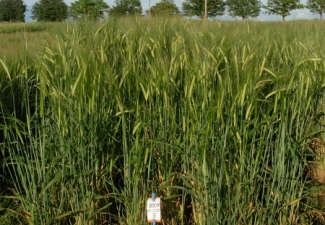Spring naked barley 'IRBE'

Species: spring naked barley
Variety title: ‘IRBE’
|
Development |
|
|
Origin: |
Filippa/CDC McGwire//Kristaps |
|
Maintainer and representative of selection breeders: |
AREI |
|
Authors of the variety: |
Linda Legzdiņa, Maija Gaiķe, Indra Ločmele |
|
Registered: |
2011. |
|
Protection period of the variety: |
up to 31 December 2036. |
|
Morphological description:
|
The plants are relatively tall. Long, productive ears. The grains are naked, light brown. The husk is relatively easy separated from grain during harvesting. |
|
Economic characteristics: |
Medium-early variety. Comparatively resistant to lodging. In different tests in the Baltic States the crop reached 71 - 118% of standard hull possessing barley varieties, amounting to 2.7 – 6.4 t ha-1. The crops in biological farming averages at 90% of hull possessing barley variety Rubiola’ (2.4-4.0 t ha-1). |
|
Quality: |
The grains are comparatively small (1,000 grain weight is on average 42 g). High density of the grains (on average 808 g l-1). Protein content is medium, starch content – high. Comparatively high content of healthy beta-glucans, contained within the fibrous tissue, is present in grain (approximately 5%). The content of vitamin E in grain exceeds that of hull possessing barley. |
|
Susceptibility to diseases: |
Infection with mildew and net blotch is uncommon, low rates of loose smut infection are possible. |
|
Use: |
The grain is mainly suitable as healthy food and animal feed. |
|
Cultivation: |
Suitable for integrated cultivation under conventional farming system, cultivation under biological farming system is possible. Recommended owing rate 450 - 500 germinating seeds per m2. Decreased germination capacity of seed is possible. Treatment of seed with mordant is recommended. Significant increase in the crop has been observed, if the dose of N fertiliser is increased. The crop was significantly increased by sulphur fertiliser. The crop should be harvested as soon as possible after complete ripening, under moist conditions the germination of grain in the ears is possible. It is recommended to harvest grain, while some moisture content in the grain is present. When harvesting grain for consumption, the separation of hull must be achieved as much as possible (reduce the threshing slot), while to harvest for seeds, it is important not to traumatise the germs of the grains (reduce rotation speed). |
|
For information: |